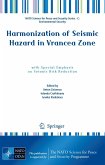The intertidal zone is the area that is exposed to the air at low tide and underwater at high tide. This area can include many different types of habitats, including steep rocky cliffs, sandy beaches, or wetlands. The area can be a narrow strip, as in Pacific islands that have only a narrow tidal range, or can include many meters of shoreline where shallow beach slope interacts with high tidal excursion. Organisms in the intertidal zone are adapted to an environment of harsh extremes. Water is available regularly with the tides but varies from fresh with rain to highly saline and dry salt with drying between tidal inundations. The action of waves can dislodge residents in the littoral zone. With the intertidal zone's high exposure to the sun the temperature range can be anything from very hot with full sun to near freezing in colder climates. Some microclimates in the littoral zone are ameliorated by local features and larger plants such as mangroves.







